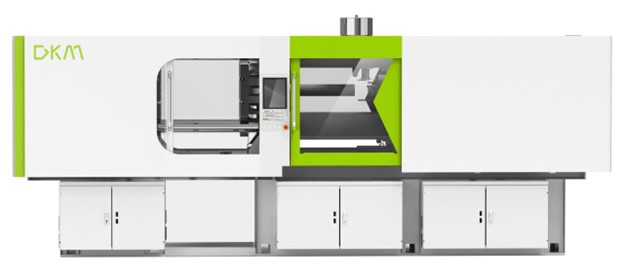
Have you ever wondered what goes into the manufacturing process of a product you buy? Have you ever wondered what it takes to make the intricate components of a machine? If so, then injection molding is for you! Injection molding is an effective and efficient way to produce precision parts.
In this article, we’ll explore the world of injection molding machines. We’ll dig into their history, how they work, and where they are used. Then we’ll discuss the importance of proper maintenance and how it can increase the longevity of your machine. Ready to learn more? Let’s dive in!
What Is an Injection Molding Machine?
An injection molding machine is a specialized device injects molten material (typically plastic) into a precision-engineered mold to produce the desired part or product. It uses high pressure to force the heated, pressurized material through a nozzle into the cavity of a prepared die or mold.
Types of Injection Molding Machines
Are you exploring injection molding machines for your business’ manufacturing needs? You’ve come to the right place! Injection molding machines come in various types, each suited for different applications.
Hydraulic: The most common injection molding machine uses hydraulic pressure to force molten plastics into cavities in the mold. It is highly versatile and can produce parts ranging from small and intricate to large-scale components.
Electric: Electric injection machines are more precise and repeatable than hydraulic models and are usually quieter too. An excellent choice for medical device manufacturing, these machines produce less heat than other injection molds.
Hybrid: Combining the best features of electric and hydraulic machines, hybrid injection molders can be adjusted to the task at hand quickly and easily. Manufacturers often use these options when high-volume production is necessary due to their energy efficiency and reliability.
By understanding the different types of injection molding machines available, you’ll be able to make an informed decision that meets your business needs.
Benefits of Using Injection Molding Machines
You might be wondering about the benefits of using injection molding machines—well, the good news is that there are plenty! Let’s look at some of them:
Efficiency
Injection molding machines are incredibly efficient thanks to features like automated functions, sophisticated touch-screen controls, and low energy consumption levels. In this way, they can help you save money in the long run.
Repeatability
Injection molding machines offer excellent repeatability because they provide a consistent and stable method of manufacturing components. This means you’ll always get consistent results in your finished product a key benefit when you need to produce parts to tight tolerances.
Speed
Injection molding machines are designed for speed and efficiency in production cycles. They can be up and running in minutes and produce multiple parts quickly and accurately. This means you can churn out more products without having to wait for the completion of each piece.
Cost-effectiveness
Using an injection molding machine is a cost-effective solution for mass production because it cuts down on time and labor costs that come with manual production processes. Plus, plastic instead of metal can lower overall production costs because plastic is generally cheaper than metal materials.
Safety Considerations When Using an Injection Molding Machine
Safety is top of mind when using an injection molding machine. Many moving parts and heated surfaces should be handled with caution. Before performing any operations or maintenance on the device, read and understand all safety information provided by the manufacturer.
When operating the machine, always remember to:
- Wear appropriate safety gear (including gloves and safety glasses).
- Use clamps to prevent the movement of molds or parts during operation.
- Never touch any part of the mold until it has cooled down completely.
- Keep hands away from moving parts and heated surfaces at all times.
- Disconnect power whenever leaving the machine unattended.
It’s also essential to keep your injection molding machine in good condition by regularly cleaning and inspecting it for signs of wear and tear.
Conclusion
When it comes to injection molding machines, it’s important to find the right fit for your project. Whether you’re using an electric, hydraulic, or hybrid system, it’s essential to understand the advantages of each and how they can benefit your production needs. From operating speed to maintenance cost, there are a variety of factors to consider.






